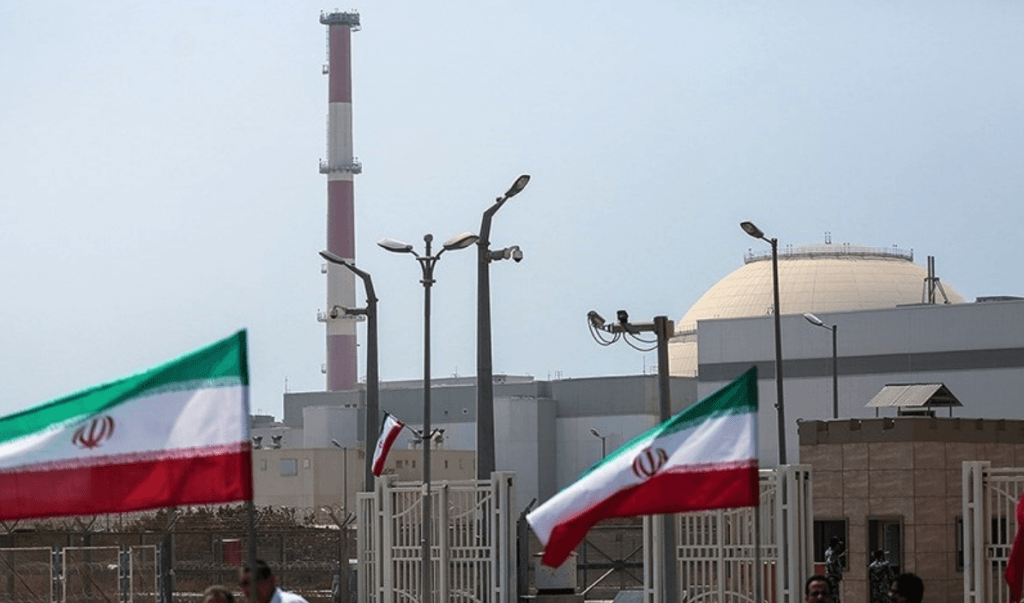First Ellias – Researcher
The arrival of IAEA Director General Rafael Grossi in Tehran on March 3 for discussions on Iran’s nuclear program with Iranian atomic energy officials, after the discovery of particles of uranium enriched at a level close to the manufacture of a nuclear bomb, marked a dangerous shift in Iran’s nuclear program, as an unpublished report by the International Atomic Energy Agency earlier this month indicated that An unpublished report by the International Atomic Energy Agency (IAEA) indicated earlier this month that it had discovered particles of uranium enriched (83.7%), that is just under (90%) needed to produce a nuclear bomb at the Fordow underground plant (100) kilometers south of the capital Tehran.
It can be said that if this report is proven, with Iran possessing sufficient amounts of uranium enriched (83.7%), along with advanced centrifuges, its possession of the fissile material needed to make the bomb will become a matter of days, or a few weeks at the latest, an unprecedented scenario in the history of the Iranian nuclear crisis, which in turn will present many questions? This current situation will play an important role in reshaping the strategic balance in the Middle East.
An important question may come here: why do so many regional powers: India and Pakistan have nuclear capabilities, without Iran having the right to do so? In this context lies the fundamental difference between Iran and these powers, which is that Iran harmonizes its regional project with its nuclear weapon, that is: it has political projects outside its borders, including religious and ideological messages, and this situation does not exist in the other nuclear powers with which we set the example, which makes Iran’s possession of a nuclear weapon along with its regional project is Which makes Iran’s possession of nuclear weapons along with its regional project unmeasurable with other powers, as Iran views the outside world with a complex philosophical view governed by the end of history, and the conflict between good (Iran) and evil (the United States and Israel), and then what would the picture look like if it had a nuclear weapon?
Since the former United state, President Donald Trump withdrew from the nuclear agreement on May 18, 2018, the Iranian nuclear action indicates an indifference to its nuclear obligations to the international community, as it abandoned many technical actions with its nuclear reactors, and it went further after the assassination of the Iranian scientist Mohsen Fakhrizadeh, having Increased uranium enrichment rates, and increasing the number of sixth-generation centrifuges, as well as producing insignificant amounts of mineral uranium, all of this indicates to how much Iran is serious to go forward in creating its nuclear weapon, with ongoing pledges by the Iranian Atomic Energy Agency, Iran’s nuclear program does not aspire to nuclear weapons, based on the nuclear fatwa previously announced by Iran’s Supreme Leader Ali Khamenei in October 2003.
In response to the latest IAEA report, Iran, which denies its desire to acquire nuclear weapons, justified the matter by referring to “involuntary fluctuations” during the enrichment process, while stressing that it “does not make any attempt to enrich beyond 60%.” In the context of the Supreme Leader, Mr. Khamenei’s opinion, even the nuclear fatwa has begun to have many question marks before it today. Earlier, the guide pledged that his country would not yield to pressure, and asserted that Iran “can develop nuclear weapons, but does not want to,” and will not change its approach to an agreement on its program, He added that Iran “will not yield to external pressure, and if Iran decides to manufacture nuclear weapons the Zionist regime cannot, and it is bigger to prevent it from doing so.”
This means that the guide’s fatwa is not consistent, if necessary, and can be changed according to circumstances. The founder of the Islamic Republic, Ayatollah Khomeini, changed his position and issued different opinions on several former internal and external issues.
In this context, Iran faces a very complex geopolitical reality, to overcome this complexity, Iran has sought to weave allied ties with all groups and movements in the Middle East and has framed its allied relations with these parties under the name of “mihwar almuqawama“ (Axis of resistance), As these groups and movements have an important role in political and security decision-making in the countries they located in, and they have greatly reduced the American pressure on Iran, whether by targeting the Americans interests or through the security of its allies.











